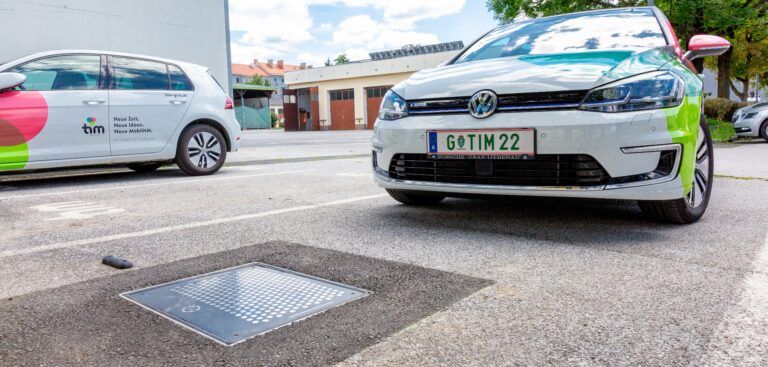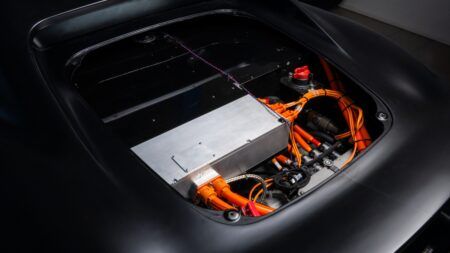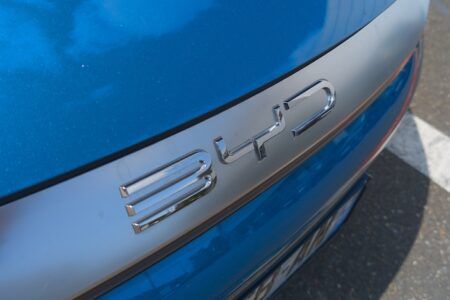The introduction of a new automated conductive electric vehicle charging system that eliminates the need for cables and obstructive infrastructure is aiming to make topping up EVs in public spaces more convenient and help boost electric car sharing schemes.
In cooperation with Easelink GmbH, a high-tech Graz-based company, Holding Graz and its mobility service tim have recently begun use of a charging system that is precisely adapted to the charging infrastructure requirements for charging in public spaces. “The solution for comprehensive urban charging infrastructure in public spaces is a cable-free, automated conductive charging system installed within the parking space surface,” says Hermann Stockinger, founder and CEO of Easelink GmbH.
Recently, Europe’s first automated charging system installed in public was put into operation by Holding Graz. The automated conductive charging system, Matrix Charging, consists of two components, a connector in the vehicle underbody and a charging plate integrated into the parking space surface. After the electric car is parked, the connector integrated into the vehicle underbody lowers and connects with the charging plate, which is embedded flush in the parking space surface. The vehicle is automatically charged with the Matrix Charging technology via the direct physical connection (conductive).
“The project for automated charging of electric vehicles combines our interest in pursuing climate protection and sustainability with our focus on practicality and functionality: The new technology should enable more reliable and efficient charging of the vehicles as part of our carsharing service ‘tim’, both supporting the goal of barrier-free accessibility in public spaces and providing additional convenience to users of the Graz Holding electric car fleet,” explains City Counselor for finance and investments Günter Riegler.
The charging plate of the charging system is integrated flush into the parking space surface. No charging pillar or charging cable are required for charging the electric vehicle. The absence of a cable connection between the vehicle and the charging station eliminates tripping hazards. A barrier-free zone is maintained, and there are no obstacles to the movement of strollers or wheelchairs.
The Matrix Charging system eliminates the need for tim users to manually plug and unplug the charging cable. Especially during rainy or snowy weather, e-carsharing users no longer have to hassle with the charging cable, juggling between the cable, an umbrella and their charging card. After parking the electric vehicle in the parking space, it is charged automatically thanks to Matrix Charging.
Within the framework of a project jointly supported by the EU and the regional division of the province of Styria as well as with funds from StLREG 2018, the Matrix Charging technology is currently being tested under real-world conditions. Further follow-up projects with Matrix Charging in public use are already in the implementation process, with more details to be communicated at the end of summer 2020.
“The feedback obtained from tim e-carsharing users will be particularly useful in the continued development of the charging technology,” says Hermann Stockinger. The insights from a variety of e-carsharing users will enter directly into the development process of the charging technology. Plus, the insights will be submitted to working groups at various international standardization bodies of which Easelink is a member. Easelink is working to set the international standard for automated charging.





